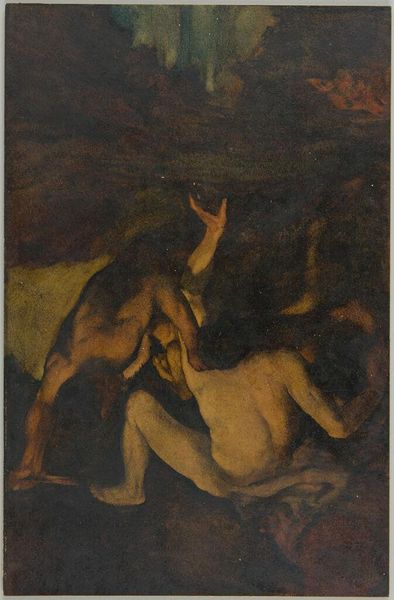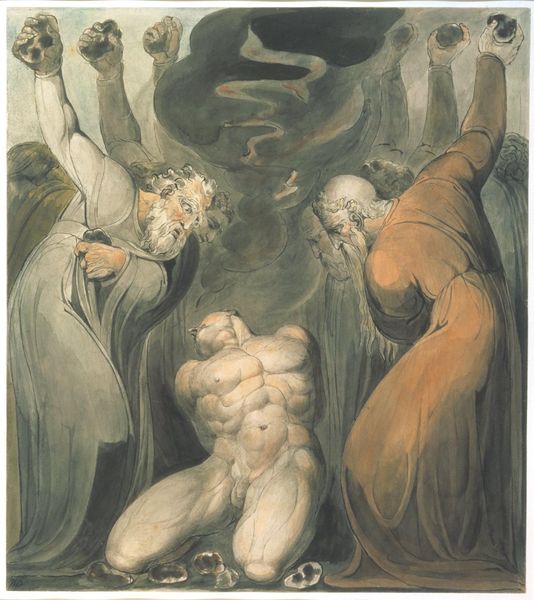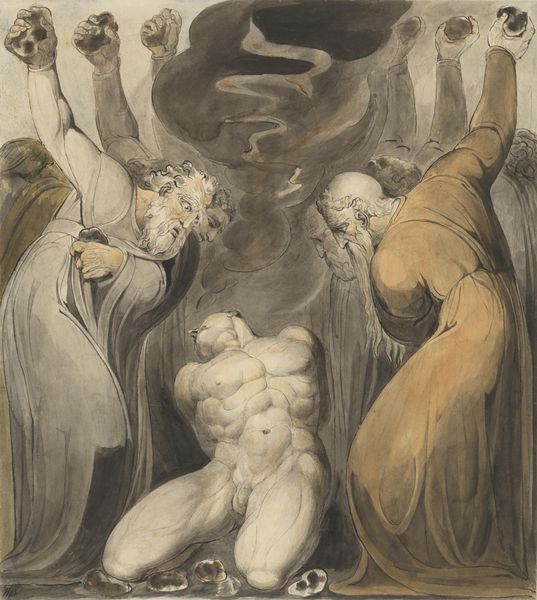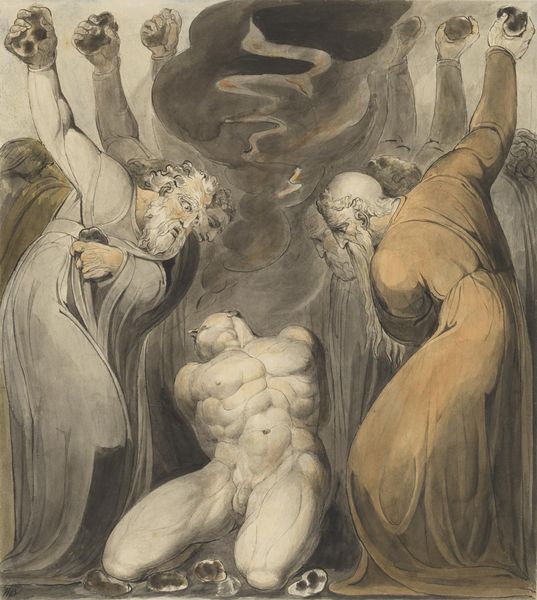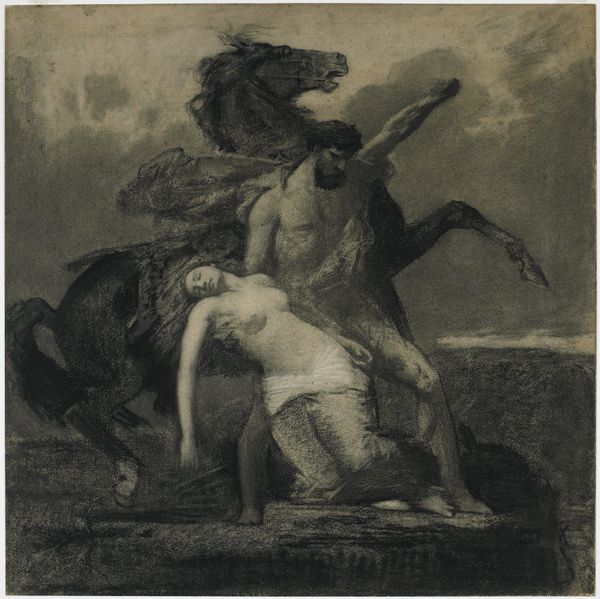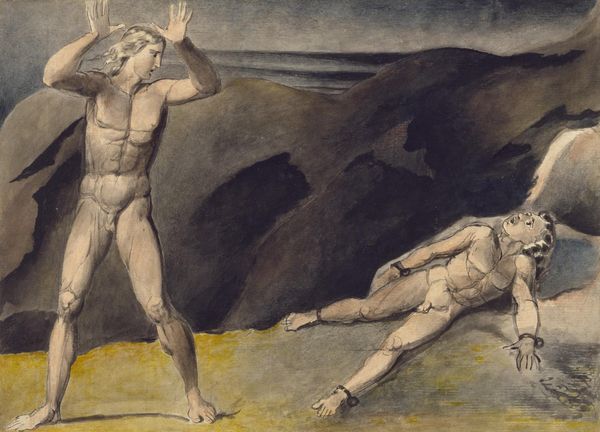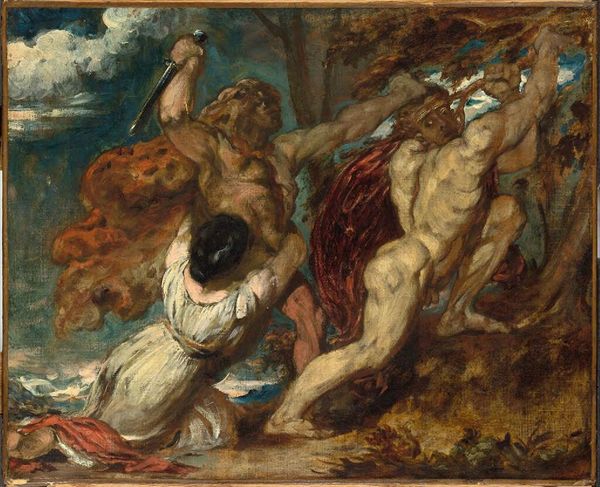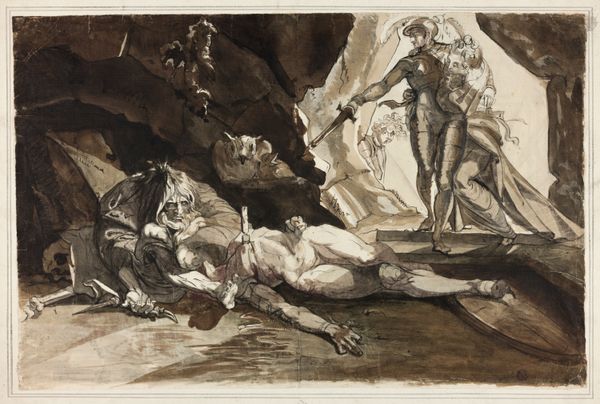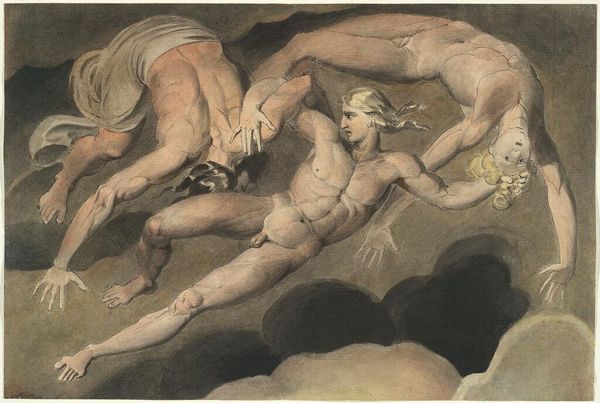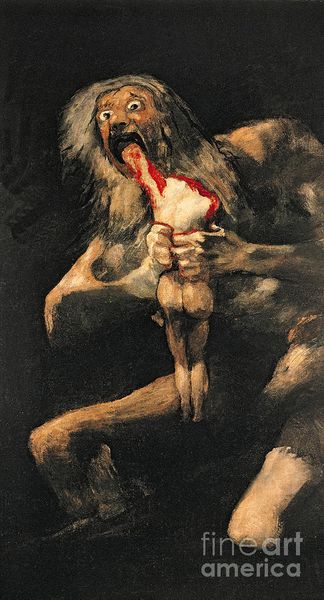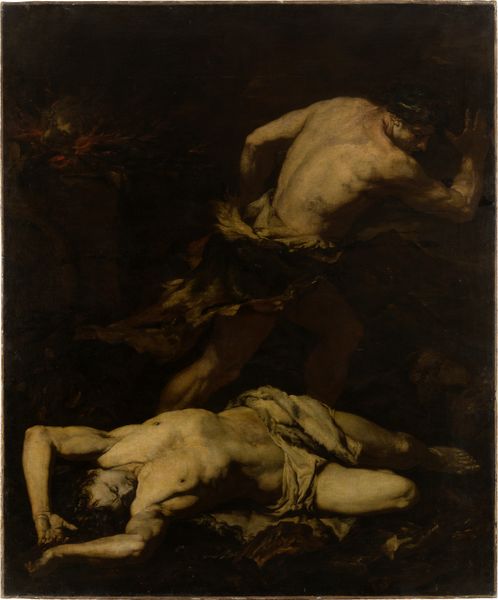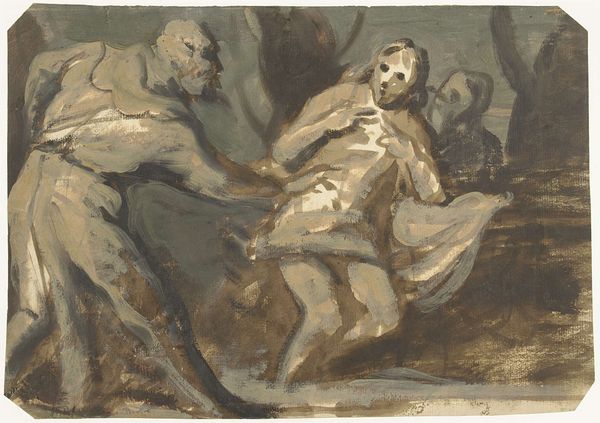
drawing, print, gouache, paper, ink, graphite
#
drawing
#
allegory
#
narrative-art
# print
#
gouache
#
figuration
#
paper
#
oil painting
#
ink
#
romanticism
#
graphite
#
history-painting
#
nude
#
watercolor
Dimensions: 552 × 676 mm
Copyright: Public Domain
Editor: This is Henry Fuseli’s “Perseus Starting from the Cave of the Gorgons,” circa 1816. It’s a mix of gouache, ink, and graphite on paper, and the scene feels chaotic, yet powerfully energetic. What do you see in this piece? Curator: I see a powerful exploration of masculine anxiety intertwined with the mythic. Consider the social and political turbulence of Fuseli's time. The French Revolution, the Napoleonic wars – all fueled anxieties about established power and traditional gender roles. This Perseus, almost violently bursting forth, isn't just a hero; he embodies the aggressive assertion of dominance in a world order perceived as threatened. What does it mean to see Perseus, stripped bare, vulnerable yet aggressively posed? Editor: I hadn't thought of it in terms of masculine anxiety. So the nakedness isn’t about idealizing the male form, but about vulnerability? Curator: Precisely. Think about the gaze, and who traditionally controls it. Perseus obtains power, but from whom and at what cost? He's framed by the monstrous feminine, literally emerging from their space. Is he truly escaping, or forever defined by that origin? How might feminist theory re-interpret Perseus' triumph over Medusa not as heroic victory, but the violent silencing of female power and agency? Editor: That’s a completely different way to view the myth! I usually think of Perseus as purely heroic. Curator: Exactly! Art invites us to challenge dominant narratives. By understanding the complex cultural contexts that inform its creation, we can critically examine our own assumptions about history, power, and gender. It really reframes the familiar, doesn’t it? Editor: Definitely. I’ll never see Perseus the same way again.
Comments
No comments
Be the first to comment and join the conversation on the ultimate creative platform.
